When it comes to selecting the perfect SUV, most buyers have a checklist: passenger capacity, engine performance, fuel efficiency, safety features, infotainment systems, and, of course, cargo space.
However, while most people think of cargo volume when evaluating an SUV’s practicality, there is a lesser-known but equally important metric—rear cargo floor area—that deserves more attention.
Unlike total cargo volume, which measures the entire cubic space from the floor to the roof, the cargo floor area specifically refers to the flat surface at the rear of the vehicle where you place your belongings.
It’s the length, width, and shape of this area that determines how usable the space is for everyday needs like loading luggage, transporting pets, carrying sports equipment, or even fitting in an air mattress for impromptu car camping.
The distinction between cargo volume and floor area is not just technical—it has real-world implications. A vehicle can boast an impressive volume figure in its brochure, but if the space is interrupted by seatback angles, intruding wheel wells, or a steep rear hatch slope, its functionality plummets.
For instance, a high cargo ceiling might boost volume numbers on paper but provide no benefit when you’re trying to slide in a flat, wide object like a TV box or a snowboard. Similarly, some designs with steeply sloped rear windows reduce the horizontal space dramatically, creating a triangular void that’s difficult to utilize.
This is why the cargo floor area—essentially, the “usable footprint” of the storage zone—becomes a more accurate reflection of how much stuff your SUV can carry efficiently.
Moreover, the importance of rear cargo floor area varies widely based on lifestyle. A single urban commuter might only use the rear space for groceries and gym bags, but for families, weekend warriors, or pet owners, a spacious and flat cargo floor is a game-changer.
Parents need room for strollers, backpacks, sports gear, and groceries—often all at once. Outdoor enthusiasts require space for tents, coolers, and bikes. And dog owners value a flat, low cargo floor where large breeds can jump in and rest comfortably during travel. In such cases, the layout of the cargo space matters far more than the raw number of cubic feet.
On the other end of the spectrum, some SUVs compromise usable cargo space in favor of design aesthetics. Sporty subcompacts or “urban crossovers” often prioritize aggressive rooflines and sculpted body shapes that eat into the rear floor dimensions.
The result is a vehicle that may look bold and modern but offers minimal space for actual storage, rendering it a poor fit for users with any significant hauling needs. Unfortunately, many buyers discover this only after purchase, when they realize that fitting a stroller or even a medium-sized suitcase into the back requires Tetris-level packing skills.
In this article, we’ve divided our analysis into two parts. First, we highlight five SUVs that offer the largest and most practical rear cargo floor areas on the market today—vehicles that are purpose-built to carry lots of gear, luggage, or passengers without spatial compromise.
Then, we examine five SUVs with the smallest rear cargo floor areas, often beloved for their compact size and efficiency but lacking when it comes to real cargo usability. These vehicles illustrate the space trade-offs manufacturers make when aiming for style, affordability, or city maneuverability.
So, whether you’re planning your next cross-country road trip, moving into a new apartment, or simply tired of playing trunk Tetris after grocery runs, understanding the difference between cargo volume and cargo floor area is essential. This guide will equip you with practical insights to help you make a more informed decision, ensuring your next SUV is as functional as it is fashionable.
The 5 SUVs with the Largest Rear Cargo Floor Area
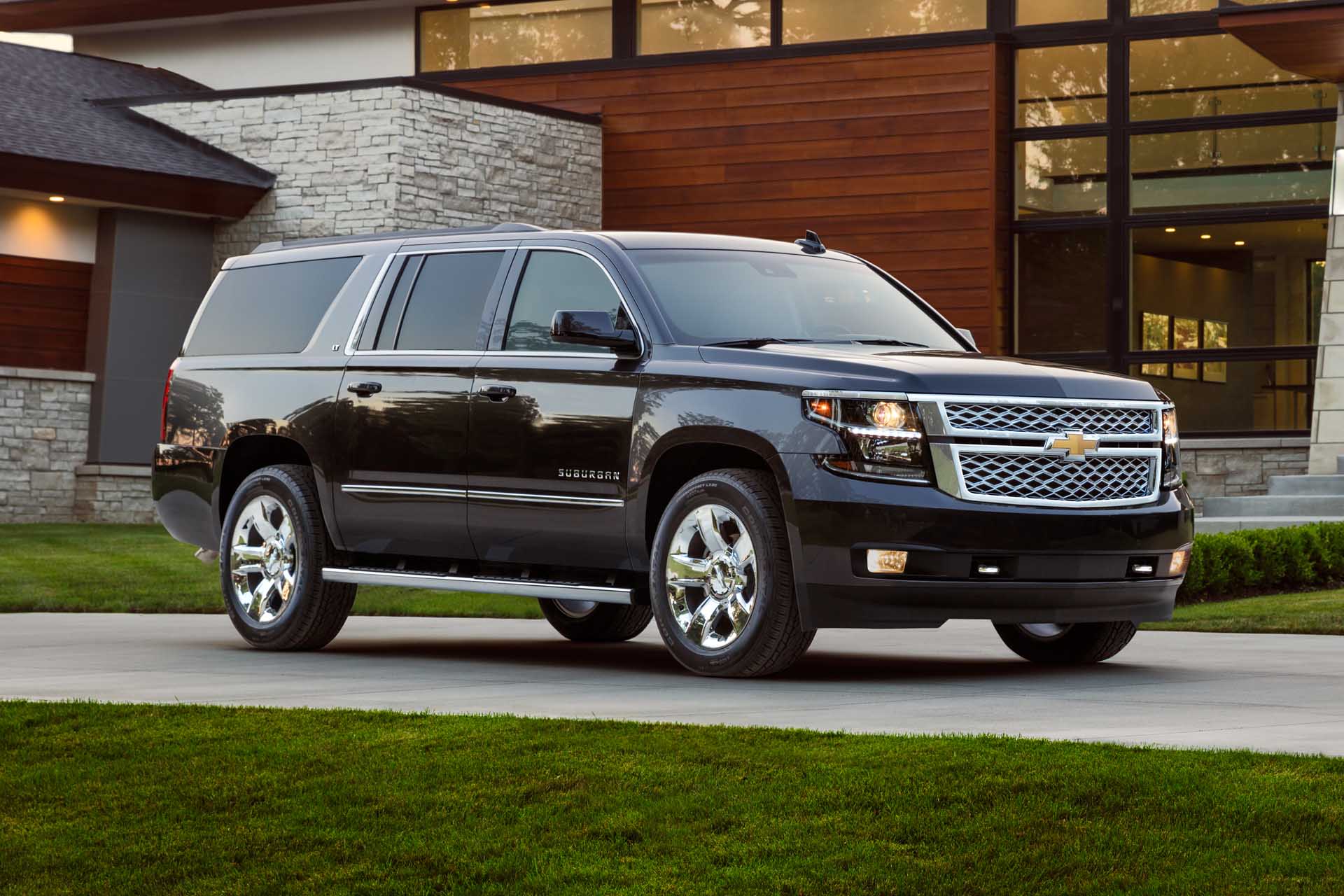
1. Chevrolet Suburban
The Chevrolet Suburban has long been the benchmark for size, space, and utility in the full-size SUV segment. As one of the longest-running nameplates in the industry, the Suburban has built its legacy on hauling people and gear with ease. At nearly 225 inches in length and riding on a long wheelbase, the Suburban’s sheer footprint translates into a cavernous rear cargo floor area that is difficult to match.
With all seats folded flat, it offers an expansive surface that can easily accommodate plywood sheets, bicycles, camping gear, or even small appliances. Unlike many mid-size or compact SUVs that advertise impressive cargo volume but deliver less usable floor space due to sloping seatbacks or narrow trunks, the Suburban boasts a wide, flat, and long load floor that’s actually usable in the real world.
The layout of the Suburban’s cargo area also benefits from GM’s decision to switch to an independent rear suspension in recent generations. This allowed engineers to lower the cargo floor while simultaneously improving third-row legroom and rear storage space.
As a result, the load-in height is lower than in previous models, making it much easier to lift and slide heavier objects directly onto the cargo floor.
Moreover, when the second and third rows are folded down, the surface is almost perfectly flat—providing nearly 145 cubic feet of total cargo volume, but more importantly, a broad, uninterrupted floor. The rectangular shape also means there are no awkward bulges or intrusions, so the area is highly predictable and easy to pack.
The floor area is especially important for those who use the Suburban in more utilitarian roles. Families with multiple children, for instance, can load up strollers, sports equipment, and groceries without needing to puzzle-piece everything into place. Dog owners can place large crates or beds in the back without worrying about tilting or sliding.
Contractors and hobbyists can haul tools and materials with the confidence that the load won’t be cramped or unstable. In this way, the Suburban’s rear floor acts more like a pickup truck bed with a ceiling—a large, uninterrupted platform ready for almost any task.
Ultimately, the Chevrolet Suburban is not just about size; it’s about how that size is configured. Its long, wide rear floor makes it ideal for road trips, hauling, or family life where space truly matters.
Unlike some full-size SUVs that taper off at the back or compromise cargo space for styling, the Suburban stays true to its purpose. It is unapologetically large and proudly practical—a rare combination in today’s SUV market that increasingly leans toward form over function.
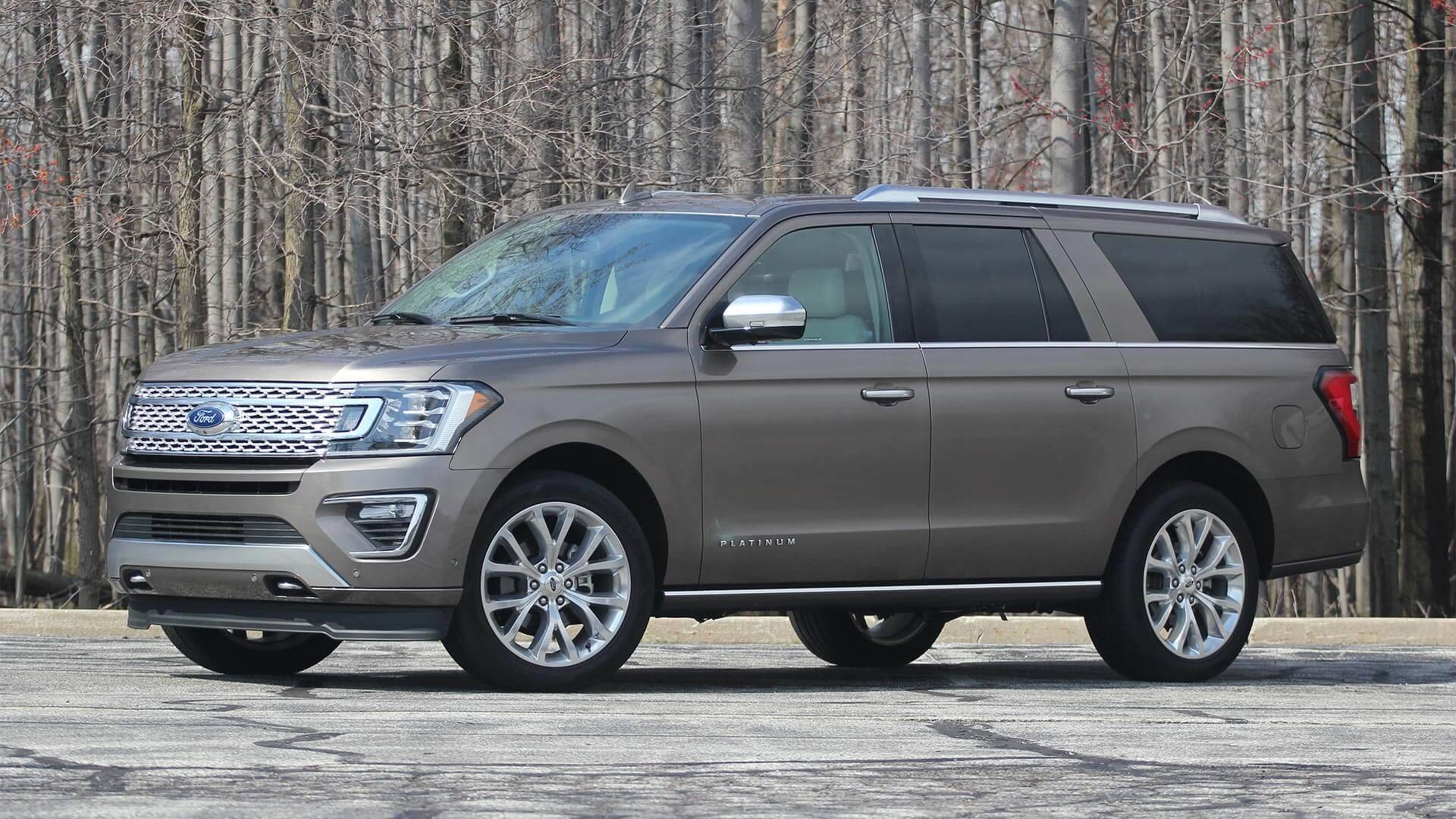
2. Ford Expedition MAX
The Ford Expedition MAX is the extended-wheelbase version of the standard Expedition, and it is specifically engineered for people who prioritize maximum cargo utility. At over 221 inches long, the MAX version delivers one of the largest cargo floor areas in any non-commercial vehicle available today.
What makes the Expedition MAX stand out isn’t just its volume, but how Ford has thoughtfully configured the space behind the third and second rows.
Even with all three rows up, the Expedition MAX offers enough flat cargo floor space for several suitcases laid flat—a feat most SUVs can’t manage without folding seats down. When all rear seats are folded flat, the cargo floor becomes enormous, ideal for everything from luggage for a family of eight to bulky sports gear and oversized equipment.
Ford’s designers have paid close attention to the way the rear floor behaves. The second and third-row seats fold nearly flush with the floor, creating a unified, long loading platform that doesn’t have the common “hump” seen in some rivals. This not only makes it easier to slide objects in and out but also improves the safety of the load by keeping everything stable during transport.
The cargo floor itself is low, wide, and squared off—giving it an edge over SUVs that narrow at the tailgate or offer less vertical headroom. Add to that the optional cargo management system with dividers and shelves, and the Expedition MAX becomes one of the most user-friendly haulers on the market.
In daily life, the value of that floor area becomes very apparent. Families with young children can load double strollers side by side or store a week’s worth of groceries with ease. If you’re an outdoor enthusiast, you can throw in tents, sleeping bags, coolers, and bikes without having to disassemble everything.
And for those who tow trailers, the flat and accessible rear floor provides the perfect space to store tow gear, tools, and supplies. It’s also great for businesses or mobile professionals who need a mobile office or storage hub for their equipment.
While the Ford Expedition MAX doesn’t always get as much spotlight as the Suburban, it is just as capable—if not more so in certain configurations. Its intelligent design, user-focused cargo solutions, and expansive floor area make it a top choice for those who value maximum space. It proves that cargo volume is not just about numbers—it’s about how well that space can be used, and the Expedition MAX nails it.
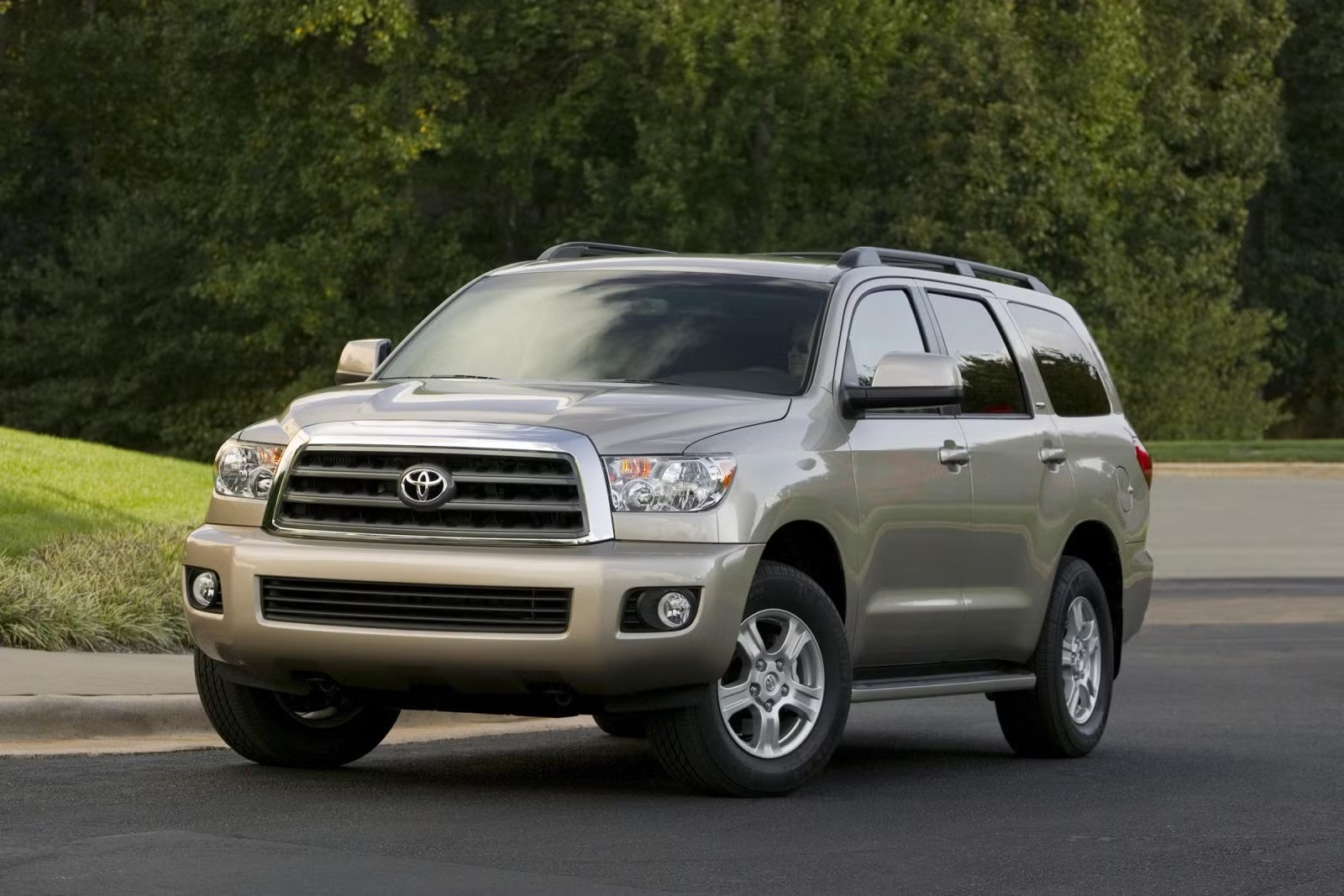
3. Toyota Sequoia (New Generation)
The latest generation of the Toyota Sequoia brings significant updates across the board—including a revised rear cargo area that is both larger and smarter than its predecessor.
Built on the same platform as the Toyota Tundra and Lexus LX, the new Sequoia adopts a more robust frame while optimizing its interior layout. One of the biggest benefits of the redesign is the new multi-level cargo floor system.
Although its total cargo volume isn’t the largest in its class, the Sequoia’s rear cargo floor is longer and flatter than previous generations, giving it improved real-world usability. Toyota has focused on creating a surface that remains flat when the second and third rows are folded, maximizing the usable area for gear, storage, or sleep setups.
One of the most unique features of the Sequoia is the adjustable cargo shelf system, which allows you to configure the rear floor at different levels. This is especially handy when trying to create a flat floor across the folded seatbacks or when trying to store items underneath without removing the shelf.
It also helps keep fragile items from rolling around or being crushed during transport. While the third row in the Sequoia slides and reclines rather than folding entirely into the floor, Toyota cleverly compensates for this by using the shelf to even out the surface. The result is a highly practical, if somewhat unconventional, flat rear cargo floor with significant usable length.
This reimagined cargo area makes the Sequoia more appealing to a wider range of users. Campers and adventurers who used to pass over the old Sequoia due to its limited cargo flexibility now have a legitimate alternative to the Yukon or Tahoe.
Parents with multiple kids will appreciate the hidden underfloor compartments and the clever shelf configurations that allow them to organize groceries, backpacks, and diaper bags without stacking them precariously. The updated suspension also keeps the load height reasonable, so getting heavy or bulky items into the back isn’t a struggle.
Toyota’s new Sequoia proves that innovation can enhance practicality. By rethinking how the rear floor is structured and incorporating modular components, Toyota has created an SUV that punches above its weight in cargo usability, even if it doesn’t top the list in volume alone. It’s a reminder that how space is shaped can matter more than how much of it there is, and the new Sequoia is living proof.
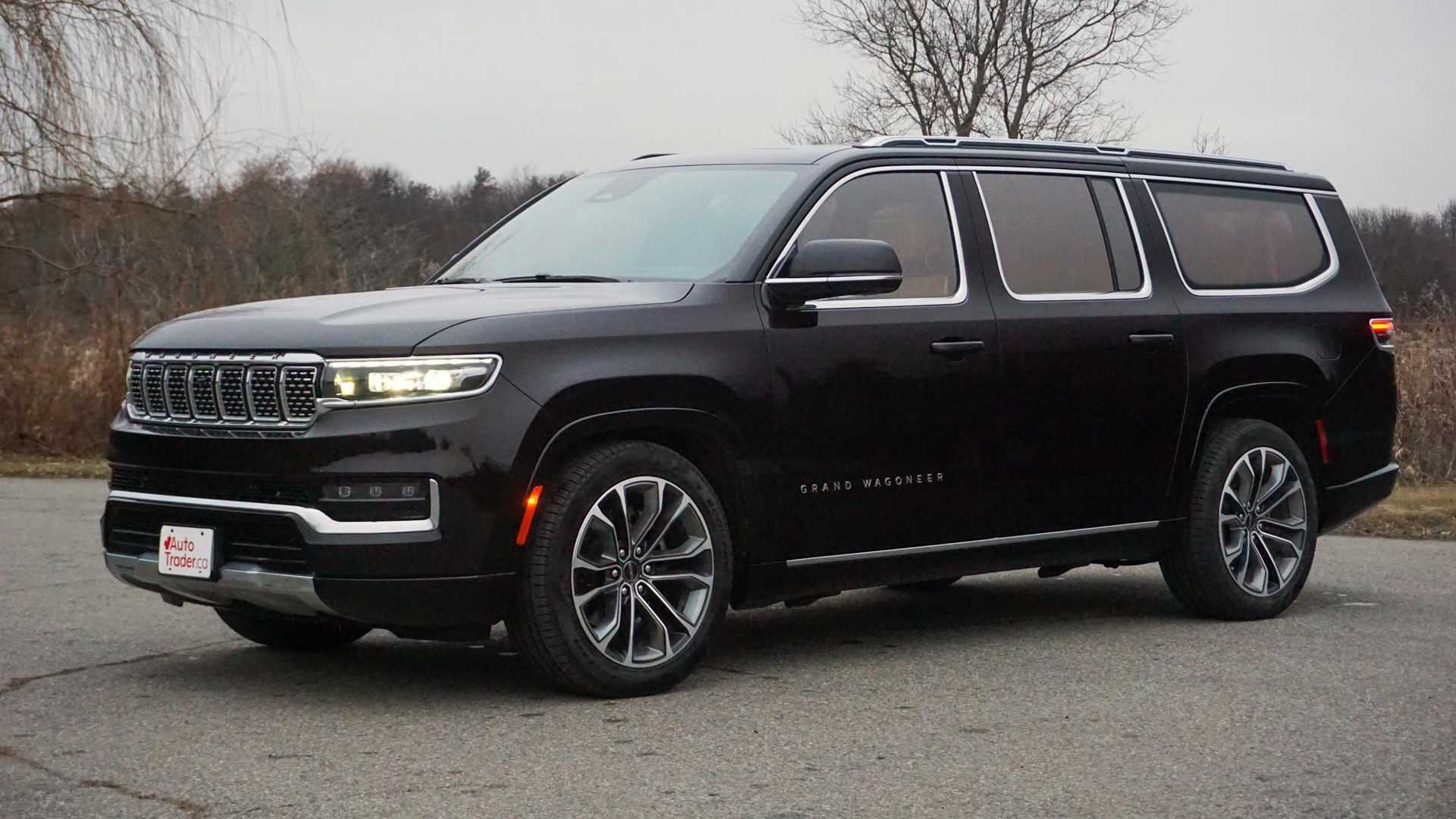
4. Jeep Wagoneer L
The Jeep Wagoneer L is a newcomer to the long-wheelbase SUV market, but it brings with it serious cargo capability thanks to its size and shape. With an overall length exceeding 226 inches and a wheelbase stretched nearly 7 inches longer than the standard Wagoneer, the “L” version provides a much larger rear cargo floor—one that rivals the best in the segment.
Jeep has made intelligent use of this additional space, designing a cargo bay that is not only long but also wide and relatively flat. Fold down the second and third rows, and you’re met with a nearly van-like expanse of floor space that can carry everything from building supplies to camping setups.
One of the more surprising elements of the Wagoneer L is how refined the cargo area feels. Jeep has taken luxury cues from its Grand Wagoneer sibling, using high-grade materials and thoughtful storage solutions throughout. Despite its upscale trimmings, the rear cargo floor remains eminently practical.
With a relatively low load-in height, wide door opening, and minimal wheel arch intrusion, the Wagoneer L provides a flat and unbroken loading surface. Unlike in some rivals, the seats fold nearly flush with the floor, and the depth from the tailgate to the back of the front seats gives the Wagoneer L an edge in cargo floor length.
For families, this makes a world of difference. You can fit multiple suitcases, coolers, sports gear, and even foldable furniture in the back without stacking vertically or angling awkwardly. Pet owners will appreciate the flat, soft floor surface and low jump-in height for larger dogs.
Those who travel for work or frequently carry tools or parts will love the roominess and the ability to access everything quickly thanks to the flat load area and wide rear access. Jeep also includes several storage compartments under the floor and along the sides, enhancing versatility without compromising space.
As a new player in the extended SUV game, the Wagoneer L is a welcome addition. It blends refinement with ruggedness and offers one of the most usable rear cargo floor areas in its class. For those who need both luxury and utility, this SUV delivers. It demonstrates that you don’t have to compromise on design to get a vehicle that works just as well for daily errands as it does for long-haul road trips.
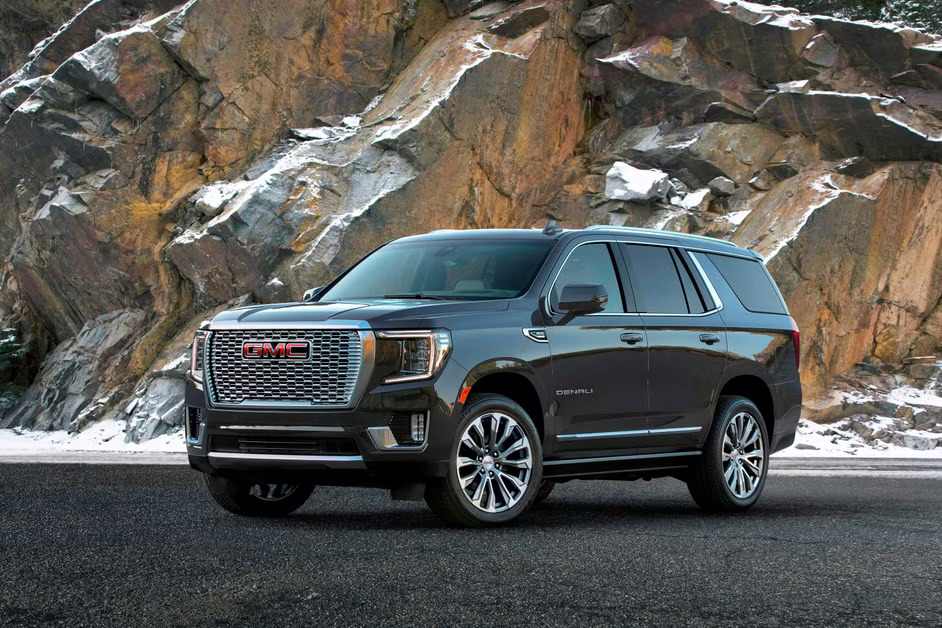
5. GMC Yukon XL
The GMC Yukon XL stands as a close sibling to the Chevrolet Suburban and shares much of its architecture, including the extended wheelbase and enormous rear cargo area.
However, the Yukon XL differentiates itself with slightly more upscale trim options and a more premium aesthetic, especially in its Denali and Denali Ultimate trims. Despite these luxury enhancements, the Yukon XL doesn’t sacrifice practicality.
In fact, it remains one of the most capable SUVs on the market in terms of usable rear cargo floor area. When the second and third rows are folded flat, the Yukon XL presents a massive and uninterrupted loading platform that stretches over 100 inches in length—more than enough for sheet goods, long sports equipment, or even a mattress.
Like the Suburban, the Yukon XL benefits from GM’s adoption of independent rear suspension. This suspension design flattens the cargo floor and removes the awkward humps that were once common in older full-size SUVs. It also lowers the load floor height, making it easier to slide in heavier items.
Importantly, the Yukon XL’s cargo area doesn’t just offer space—it offers space that is actually usable. The flat floor, squared-off interior dimensions, and wide-opening rear gate make it exceptionally easy to load and unload, whether you’re filling it with moving boxes, tools, or groceries. GMC also includes thoughtful details like tie-down anchors, rear USB ports, and under-floor storage compartments.
One of the less discussed but extremely valuable features of the Yukon XL is how well it accommodates cargo even when the third row is in use. With all seats up, you still get significant rear floor space behind the third row—enough to handle several pieces of luggage or large shopping hauls.
That’s a major advantage for large families who want to use all three rows of seating without completely giving up cargo room. Fold down just the third row, and the cargo floor becomes expansive enough for cross-country road trips or weeks-long camping expeditions. Fold down both rear rows, and the SUV transforms into a full-on utility van with luxury appointments.
The Yukon XL is the embodiment of practicality meets refinement. It offers one of the longest and widest rear cargo floors in the SUV market, without compromising on creature comforts, technology, or drivability.
Whether you’re a contractor needing daily hauling capacity, a growing family juggling kids and gear, or a road-tripper who packs heavy, the Yukon XL delivers in spades. It’s a workhorse with a tuxedo—and it proves that function and form can, in fact, coexist beautifully.
The 5 SUVs with the Smallest Rear Cargo Floor Area
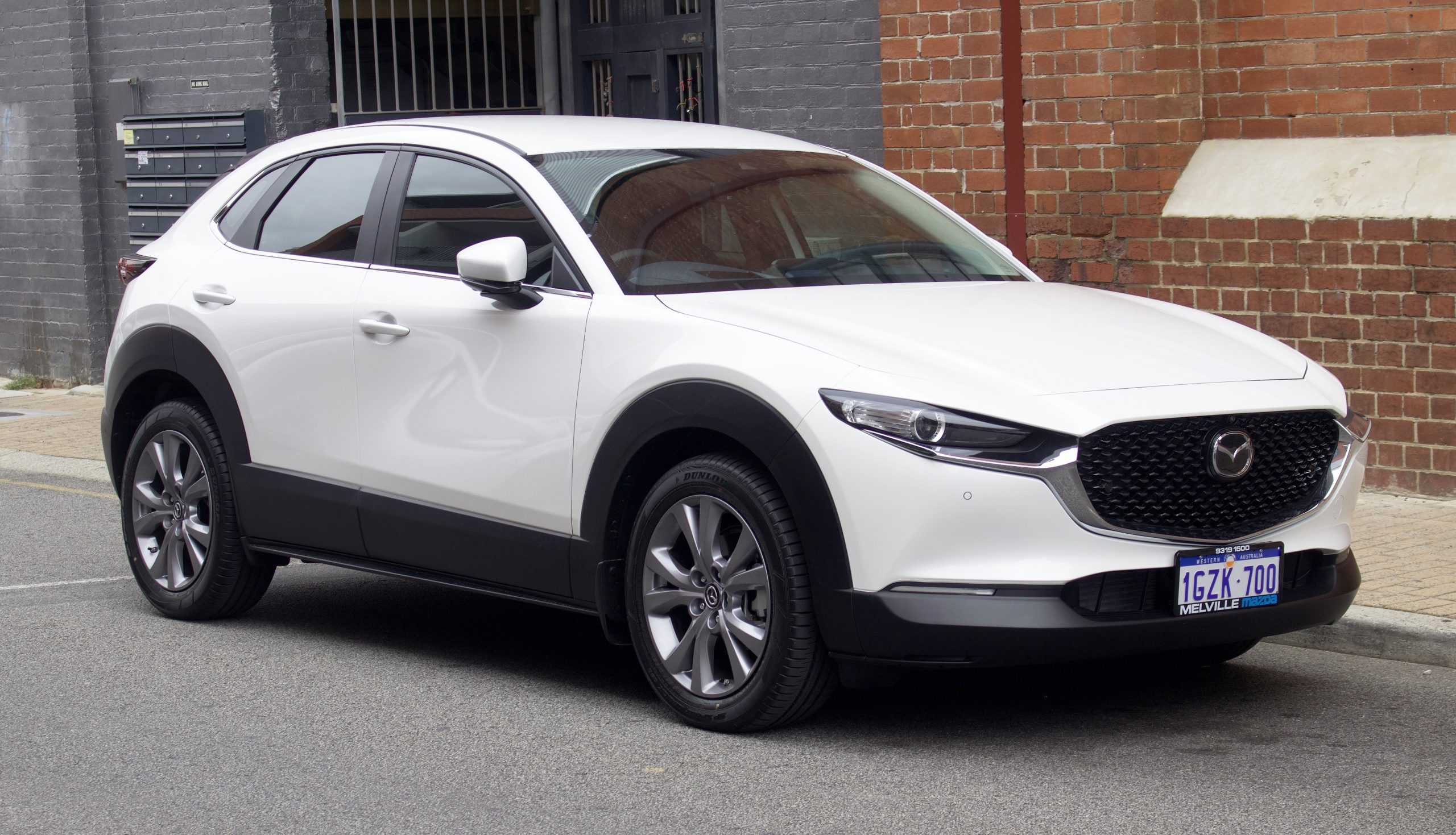
6. Mazda CX-30
The Mazda CX-30 is a stylish subcompact crossover that punches above its weight in terms of driving dynamics, interior quality, and overall refinement. However, one of the key areas where it underdelivers—at least from a utility standpoint—is its rear cargo floor area.
While it looks like a mini SUV on the outside, the reality is that its coupe-inspired silhouette and tightly packaged rear end significantly limit the floor space available for cargo.
The sloping rear hatch and thickly contoured seatbacks cut into the usable floor area, meaning that while it technically offers a decent cargo volume number on paper, the length and width of the rear floor are constrained. For anyone looking to haul wide or long items, the CX-30’s cargo space will feel restrictive and awkward.
Mazda has clearly prioritized form over function in this vehicle. The rear opening is relatively narrow, and the space between the wheel wells further limits what can be laid flat on the cargo floor. The second-row seats do fold down, but they don’t create a truly flat floor.
Instead, there’s a noticeable angle and gap between the trunk floor and the folded seatbacks, which makes sliding in large boxes or suitcases more of a challenge than it should be.
Additionally, the cargo floor itself sits fairly high off the ground for a vehicle this size, which increases the lift-over height and reduces accessibility—especially for shorter users or those trying to load heavier gear.
In real-world usage, the CX-30’s cargo area is best suited for smaller, softer items like backpacks, grocery bags, or duffels. Trying to fit a baby stroller, a bicycle, or even a mid-size dog crate can be an exercise in frustration due to the lack of length and headroom. What’s more, the hatch door doesn’t open particularly wide, which can limit vertical clearance when accessing the cargo area.
It’s clear that Mazda designed this SUV for drivers who value design flair and a sporty feel over maximum functionality. For commuters or couples who travel light, the limitations might not be an issue. But for families or people with frequent cargo needs, the CX-30’s rear area quickly becomes a limiting factor.
That said, it’s worth noting that not every buyer wants or needs a cavernous trunk. Some may choose the CX-30 precisely because of its smaller footprint and sleek shape, which are advantages in dense urban environments. It parks easily, handles like a hatchback, and looks far more refined than many of its bulkier competitors.
But in the context of this article—where the focus is specifically on the rear cargo floor area—the CX-30 stands out as one of the smallest and least practical, especially when compared to more squared-off designs in the same size class.
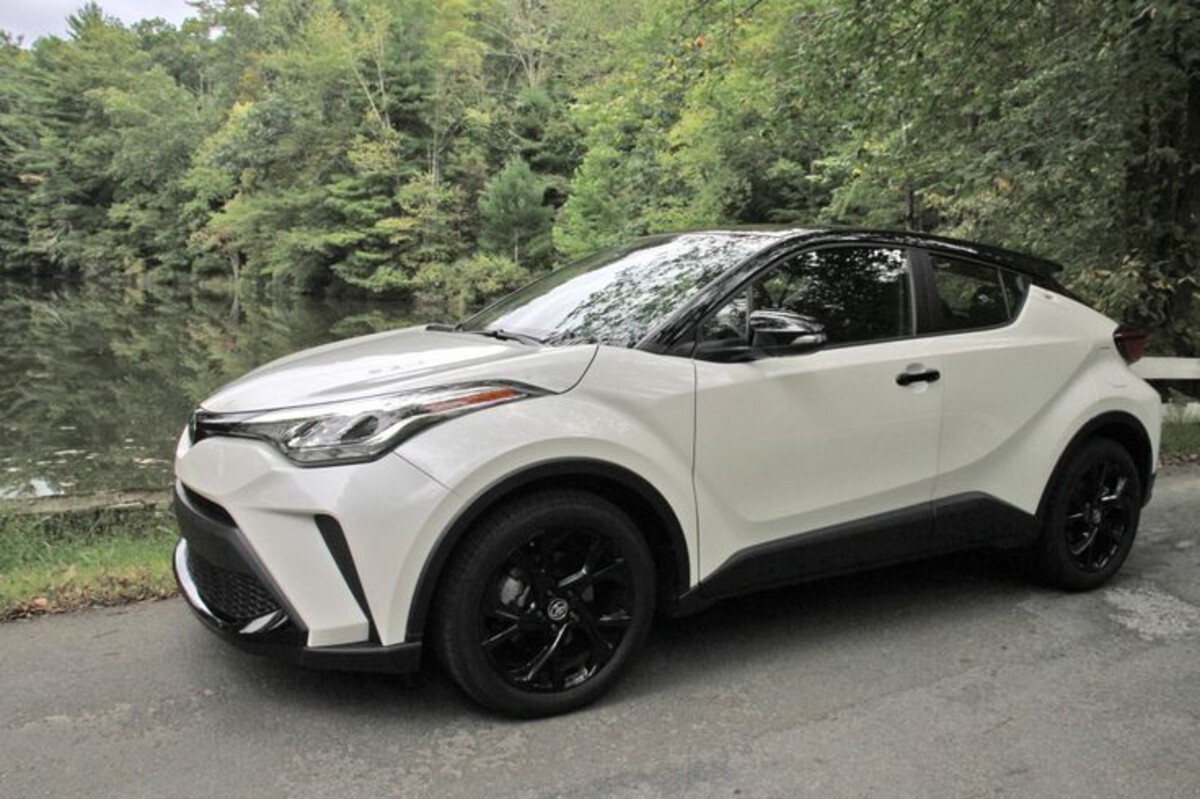
7. Toyota C-HR
The Toyota C-HR is an SUV in name, but in practice, it leans more toward being a lifted hatchback with a bold design statement. Its sharply angled rear window, aggressive roofline, and narrow body all contribute to a stylish appearance, but these same design elements dramatically impact the rear cargo floor area.
The cargo bay is quite small in every dimension: it’s short front to back, narrow between the wheel wells, and significantly tapered at the top. While Toyota lists a competitive cargo volume figure on paper, the reality is that the actual usable floor area is minimal—especially when trying to carry flat, rigid items like luggage or gear cases.
One of the C-HR’s biggest drawbacks is the shape of the rear hatch opening. It’s high off the ground and slants inward, which further limits access to the cargo area. The lift-over height is also taller than expected for a vehicle this size, making it harder to get heavy items in and out.
When the second-row seats are folded down, the floor surface is uneven and rises sharply due to the elevation of the folded seatbacks. This creates a multi-tiered cargo area rather than a single flat floor, severely reducing its practicality for loading larger objects. Even when trying to lay down a standard piece of carry-on luggage, the limited depth of the cargo area often forces you to angle it awkwardly or place it upright, consuming even more space.
In everyday scenarios, the C-HR’s trunk area is fine for a few shopping bags, a couple of small duffels, or maybe a compact stroller—if you position it just right. However, it becomes quickly apparent that this vehicle is not intended for heavy hauling or even moderate cargo flexibility.
The thick rear seats, combined with the small hatch door and sloped rear pillars, mean that even folding down the back seats doesn’t result in a truly functional cargo space. This is especially frustrating given how many buyers may assume that the “SUV” badge implies more utility than the C-HR can actually offer.
What Toyota delivers with the C-HR is a city-centric crossover that’s more about image, ride height, and efficiency than it is about utility. It’s a great car for single urban dwellers or younger drivers who want something stylish and easy to maneuver. But from a purely functional standpoint—particularly when measuring rear cargo floor area—the C-HR ranks among the most limited options in the compact SUV space.
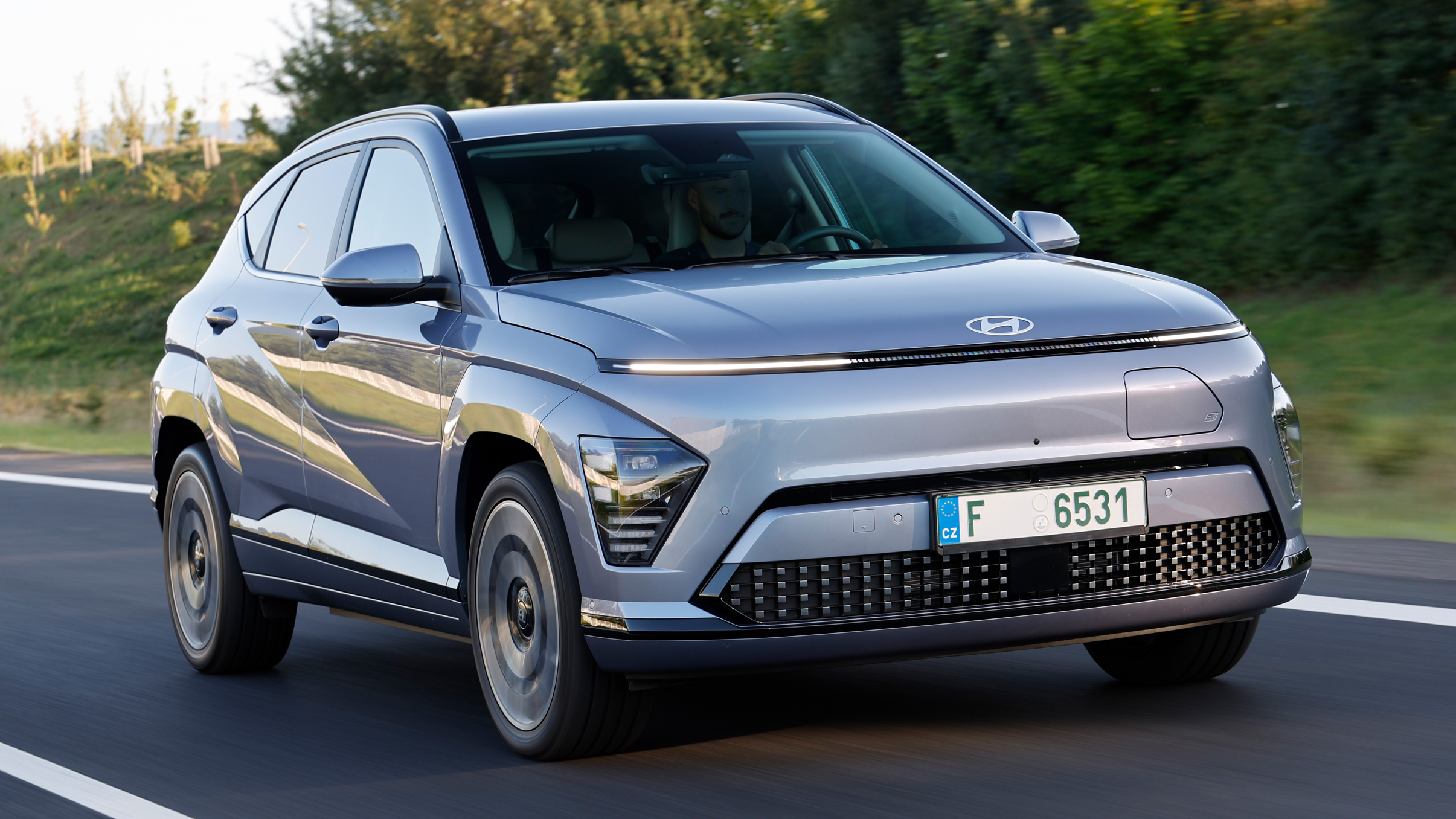
8. Hyundai Kona
The Hyundai Kona has become a popular option in the subcompact SUV segment, thanks to its affordable price, cheerful styling, and peppy performance. However, when it comes to rear cargo floor area, the Kona falls short—literally. Despite appearing practical on the surface, the Kona’s interior packaging creates limitations that are immediately noticeable when loading up the trunk.
The cargo floor is relatively high, due in part to the vehicle’s rear axle and underfloor storage tray, which limits the depth available for taller items. Additionally, the space behind the rear seats is not particularly long, and the overall dimensions of the cargo bay are narrow, reducing its ability to handle bulky or flat items.
The second-row seats fold in a 60/40 split, but like many vehicles in this class, the seats don’t fold fully flush with the floor. There’s a noticeable incline, which can be awkward when loading boxes or trying to create a flat surface for sleeping or gear storage.
The cargo area is also affected by the shape of the vehicle itself—the rear roofline tapers slightly, and the window line swoops upward, cutting into rear visibility and limiting vertical cargo space. This may not be an issue for short grocery runs or everyday commuting, but it becomes a challenge when the Kona is asked to function like a more spacious SUV.
For pet owners, gearheads, or anyone who travels frequently with larger items, the Kona’s cargo limitations are obvious. Even with the seats down, you’re left with a space that’s better suited for bags than boxes, and one that’s difficult to optimize for odd-shaped objects.
There’s no real underfloor pass-through space that’s useful for long items, and the raised lip at the trunk’s edge creates a small but annoying obstacle when trying to slide in heavier objects. In essence, the Kona’s rear cargo floor is more hatchback than SUV, which is perfectly fine—unless you were expecting it to behave like a true utility vehicle.
That being said, the Kona isn’t trying to be something it’s not. It’s designed for city dwellers and casual drivers who value compact dimensions, good fuel economy, and a fun driving experience.
Its limitations in cargo floor space are a side effect of its compact form factor and stylish design, not an oversight. Still, if you’re someone who regularly needs to transport larger items or values a long, flat cargo floor, the Kona will likely leave you wanting more.
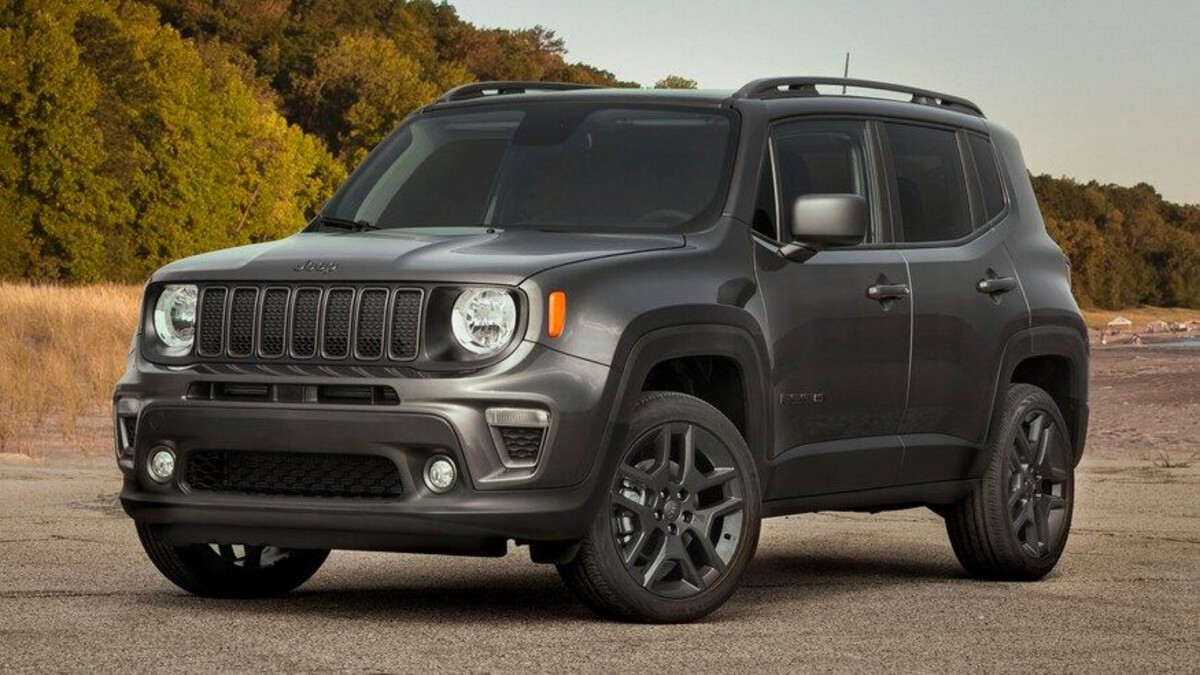
9. Jeep Renegade
At first glance, the Jeep Renegade appears to be more practical than some of its competitors, thanks to its boxy shape and upright design. It certainly looks like it should offer more interior space, particularly in the rear cargo area. However, that impression is quickly dispelled once you open the tailgate and examine the actual cargo floor.
The Renegade’s rear cargo area is quite shallow and short from front to back. While the vehicle’s upright stance helps with vertical clearance, the flatness and length of the rear cargo floor are far from ideal. This makes it hard to pack anything long—like golf bags, skis, or large boxes—without some creative maneuvering or seat folding gymnastics.
Jeep does offer a dual-height adjustable cargo floor in some trims, which helps a little by eliminating the step between the folded seatbacks and the main floor. However, the problem isn’t just in the slope—it’s in the sheer lack of depth. With the seats up, the usable floor is only enough for a couple of backpacks or a few shopping bags.
Fold the seats down, and although you gain volume, the angle and proportions of the space still don’t lend themselves to efficient loading. The rear gate’s narrow opening and high lift-over height only make matters worse, particularly when trying to insert wider gear or heavy items.
Owners who try to use the Renegade for practical purposes often find themselves frustrated by its deceptive interior packaging. It may have a rugged, off-road-ready image, but the Renegade is far from being a cargo workhorse.
The cargo floor doesn’t support heavy-duty needs or even weekend DIY projects unless you’re carrying compact and lightweight materials. There are a few hooks and tie-down points, but they can’t make up for the spatial limitations inherent in the vehicle’s design. The result is a cargo space that underdelivers on the promise of the Jeep badge.
Still, for drivers who prioritize off-road flair and compact city performance over utility, the Renegade may hit the mark. It offers a fun driving experience, excellent visibility, and a sense of character that’s lacking in some competitors. But if you’re in the market for a subcompact SUV with a generous rear cargo floor area, the Renegade ranks among the smallest and least accommodating.
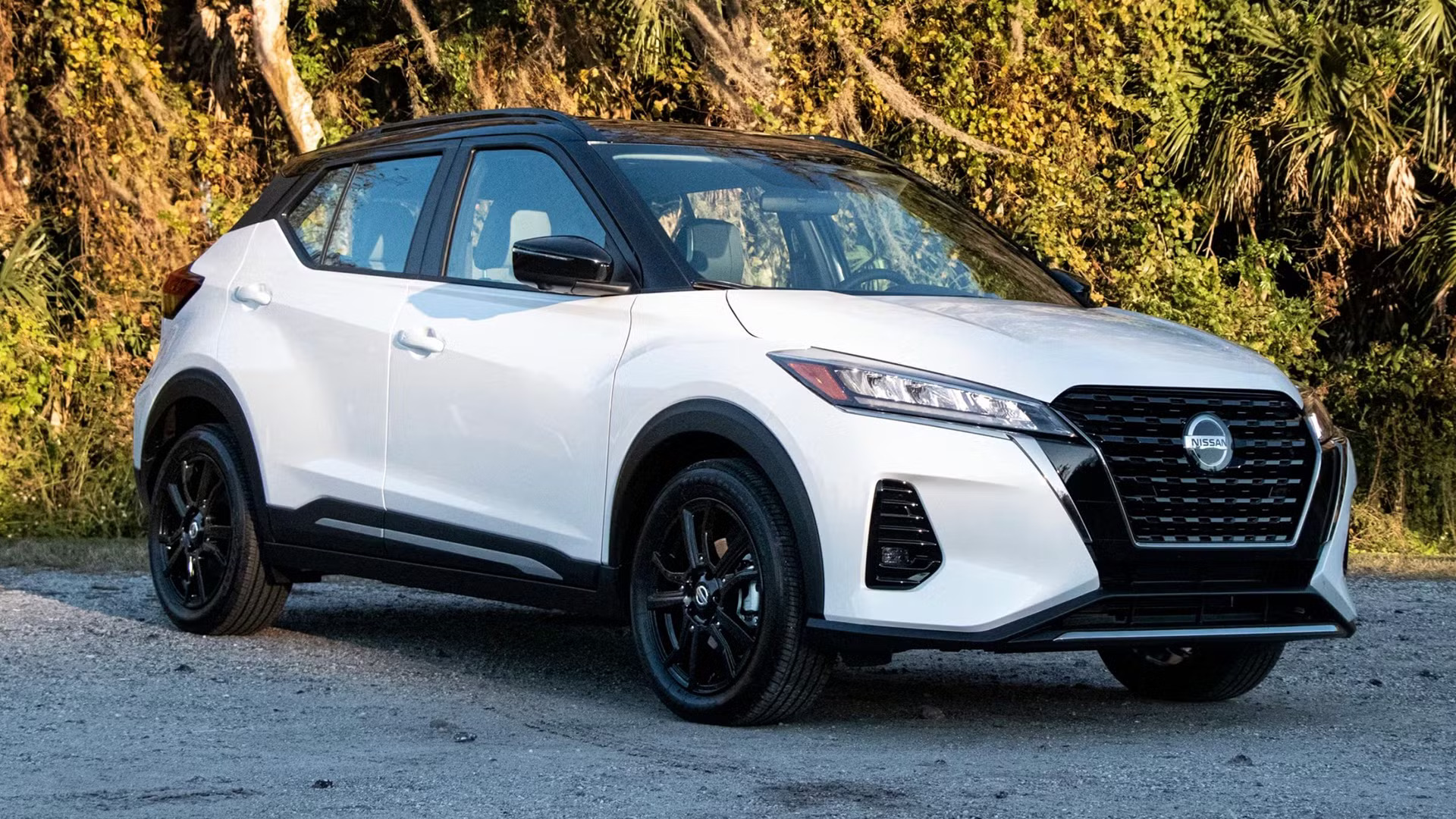
10. Nissan Kicks
The Nissan Kicks is one of the most budget-conscious SUVs in the subcompact segment, and while it offers strong fuel economy and decent tech for the price, its utility credentials are held back by a constrained cargo layout. The rear cargo floor is not particularly long or wide, and the lift-over height is a bit higher than expected for a vehicle this size.
Even with the rear seats folded, the transition from seatbacks to cargo floor is uneven, making it difficult to create a fully flat surface. This broken-up geometry hinders the Kicks’ ability to carry long or awkward items efficiently.
One of the more noticeable issues with the Kicks is the lack of depth in the rear area. The cargo floor is flat, but the usable space behind the rear seats—especially when they are up—is limited to small bags and soft items. It’s not unusual for owners to find that even a medium-sized suitcase must be placed upright or at an angle.
The underfloor area is minimal, and the shape of the trunk is curved in a way that reduces actual floor dimensions. While the Kicks may look roomy from the outside, much of that exterior space is used for passenger comfort rather than cargo utility.
From a practical standpoint, the Kicks works best as a commuter car or a second vehicle for light errands. It’s great for city driving and parking, but its cargo limitations become evident the moment you try to carry more than two or three bags.
The rear hatch doesn’t open particularly wide, and the tapering side walls reduce how far you can spread out your gear. There are no clever cargo management systems, dividers, or underfloor compartments to help maximize what little space is available.
To be fair, Nissan never claimed the Kicks was meant for heavy hauling. It’s designed for value shoppers and urban drivers who want an SUV form factor without the fuel and cost penalties of larger models. But for anyone comparing subcompact SUVs based on usable rear cargo floor area, the Kicks lands near the bottom of the list.
Also Read: 5 Cars With the Lowest Cabin Carbon Footprints and 5 Using Harsh Materials
As we’ve explored throughout this article, the distinction between total cargo volume and rear cargo floor area is more than just a technical nuance—it’s a critical difference that can dramatically affect how useful an SUV is in everyday life.
While manufacturers often promote volume numbers to suggest generous storage capacity, it’s the flat, accessible surface at the back of the vehicle—the cargo floor—that most of us interact with regularly. Whether you’re hauling groceries, moving furniture, taking the family on vacation, or just need room for a dog crate, that rear floor space is where function truly lives.
The five SUVs with the largest rear cargo floor areas—Chevrolet Suburban, Ford Expedition MAX, Toyota Sequoia (new generation), Jeep Wagoneer L, and GMC Yukon XL—demonstrate how design and engineering can come together to create expansive, versatile, and user-friendly storage areas.
These vehicles not only offer impressive floor lengths and widths but also optimize the load-in height, seat folding mechanisms, and underfloor storage options to make every inch count.
Their large rear floors serve as mobile utility platforms, capable of handling everything from hardware store runs to extended road trips. If you regularly carry long, wide, or heavy items—or just a lot of stuff—these full-size SUVs provide the kind of real-world cargo usability that numbers alone don’t convey.
In contrast, the five SUVs with the smallest rear cargo floor areas—Mazda CX-30, Toyota C-HR, Hyundai Kona, Jeep Renegade, and Nissan Kicks—represent the other end of the spectrum. These subcompact or style-focused models may appeal to city drivers, budget-conscious shoppers, or those with minimalist cargo needs, but they sacrifice space for aesthetics or compactness.
Rear hatch slopes, high cargo floors, awkward seatback angles, and narrow trunk openings all contribute to reduced usable space. While their overall volume stats may appear respectable, their floor areas often fail to meet the demands of anyone needing to carry more than a few bags or small boxes. For drivers expecting true SUV functionality from these models, the reality can be disappointing.
Of course, not everyone needs a giant SUV. For city dwellers who prioritize parking ease and fuel economy, small crossovers with limited cargo space can still make sense. The key is knowing what you need and choosing accordingly. If your lifestyle includes pets, kids, sports gear, or travel, a long and flat cargo floor will make a noticeable difference.
On the other hand, if your cargo is limited to groceries and gym bags, the trade-offs of a smaller vehicle may be well worth it. The trick is not to be swayed solely by volume figures or marketing claims but to consider the shape, size, and usability of the space you’ll use the most.
Ultimately, the rear cargo floor area offers a more grounded, practical way to assess an SUV’s storage capability. It cuts through the hype and gets to the heart of how usable that rear space truly is.
In many ways, it’s a better test of an SUV’s real-world functionality than almost any other spec. So the next time you’re test-driving a vehicle or comparing specs online, don’t just ask how many cubic feet it can hold—ask how much of that space you can use.
By understanding and prioritizing rear cargo floor area, you’ll not only avoid the frustration of a cramped trunk but also ensure that your next SUV is genuinely suited to your lifestyle. Because at the end of the day, an SUV shouldn’t just look capable—it should be capable. And that starts with the space you can count on when you open the hatch.

